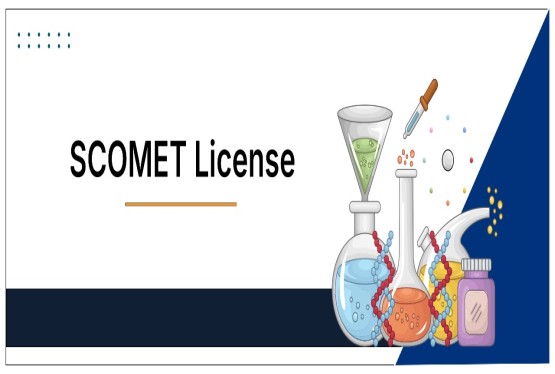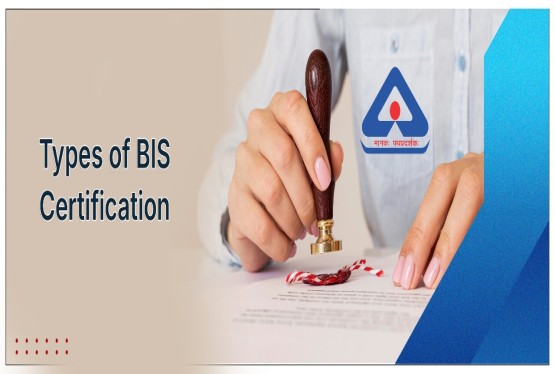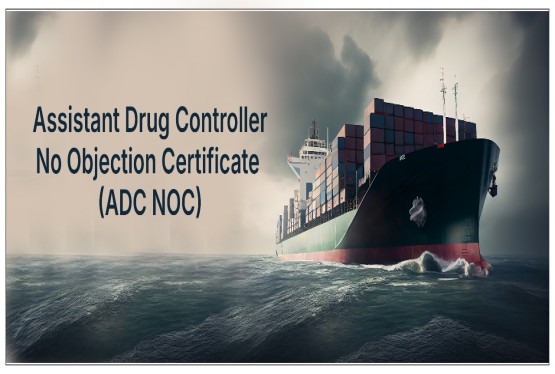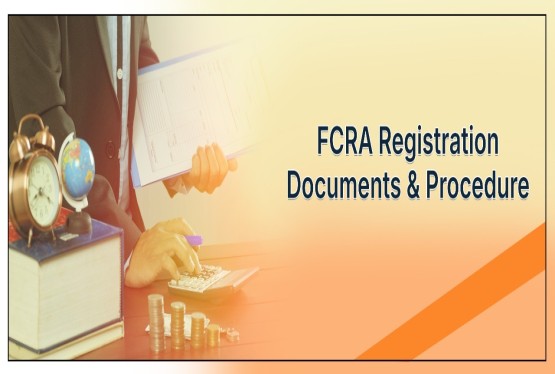Barcode Registration has become an important tool for efficient inventory management, product identification, and supply chain tracking. Whether you're running a retail chain, manufacturing unit, or an e-commerce platform, having a barcode on your products helps simplify logistics and improve operational efficiency. In India, the process of barcode registration is regulated by GS1 India, an organization affiliated with the global GS1 network. This article focuses on providing a clear and detailed understanding of the documents and procedure for barcode registration in India, using simple, practical, and easy-to-understand language.
What is Barcode Registration and Why is it Important?
Barcode registration refers to the process of obtaining a unique barcode number for your products from a recognized authority, such as GS1 India. This barcode is a unique machine-readable image that stores product-related data in the form of parallel lines and numeric digits. It plays a critical role in inventory control, product tracking, billing, and sales processing. By registering a barcode, businesses ensure that each product can be identified, scanned, and processed without error across the supply chain.
Barcodes are not just a visual mark; they are integrated with databases that contain detailed product information like product name, batch number, MRP, manufacturing date, and expiry. This integration ensures accuracy, improves efficiency, and provides a better experience for retailers and customers alike.
Who is Responsible for Barcode Registration in India?
In India, GS1 India, a not-for-profit organization set up by the Ministry of Commerce & Industry and leading industry bodies, manages barcode registration. It ensures global compatibility and assigns barcodes following the international GS1 system.
Benefits of Barcode Registration in India
Barcode registration isn't just a regulatory step — it plays a vital role in making business operations smoother, more efficient, and more professional. Let's explore the detailed benefits of barcode registration that every business owner should know:
Accurate Product Identification and Error Reduction
Manual entry of product details can often lead to mistakes—whether it’s entering the wrong price, quantity, or product code. These human errors can lead to billing disputes, stock mismatches, and customer dissatisfaction. However, with barcode registration, each product gets a unique code that can be scanned instantly by a machine. This eliminates errors caused by manual typing or verbal communication. It ensures that the exact product details are picked every time, resulting in precise billing, correct inventory updates, and fewer mistakes in supply chain operations.
Streamlined Inventory Management and Tracking
Keeping track of thousands of products in real-time can be overwhelming, especially for businesses in retail, manufacturing, or distribution. Barcode registration enables automated inventory management by allowing products to be scanned at every stage—whether it's inward from suppliers, movement within the warehouse, or outward to customers. This allows businesses to track stock levels accurately, identify slow-moving or fast-selling products, avoid stock-outs or overstocking, and maintain a lean inventory system. Ultimately, this improves decision-making and inventory planning.
Saves Time in Daily Business Operations
Barcodes help save hours of manual work every day. Imagine manually entering item codes or descriptions for hundreds of products in a day versus simply scanning a barcode that populates all the product data in a second. Whether it’s billing at the checkout counter, performing stock audits, or handling online order fulfillment, barcodes reduce time consumption and increase the speed of every task. This allows employees to focus on more strategic or customer-facing activities, improving overall productivity and service delivery.
Faster and More Accurate Billing Process
Barcode systems are commonly used in billing because they ensure instantaneous and accurate entry of product prices, discounts, and taxes. Instead of manually entering product names and prices into the POS system, a barcode scan can fetch all the relevant information in real-time. This not only speeds up the checkout process but also increases customer satisfaction as it minimizes wait time and reduces the chances of billing errors. It also helps in maintaining consistency in pricing across different stores and billing staff.
Enhances Professional Image and Business Credibility
Customers and distributors tend to trust businesses that appear more organised and systematic. Having barcodes printed on your products gives your brand a professional and credible identity. It shows that you are serious about business operations and are in line with modern supply chain practices. For businesses that want to scale operations, work with large retailers, or export goods, barcode registration becomes a basic expectation and a mark of standardization.
Global Product Recognition and Export Readiness
Barcodes issued by GS1 India follow international standards. This means that once you register your product, the barcode is valid not only in India but across the globe. This opens doors for small and medium enterprises to take their products to international markets without worrying about product compatibility or labelling issues. It also helps comply with customs, international distributors, and foreign retailers that often require GS1 barcodes for product identification.
Enables Easy Product Return and Warranty Management
Barcodes are not just used at the time of sale; they are equally useful during product returns, warranty claims, or batch tracking. For example, if a customer wants to return a defective item, the barcode on the product or invoice helps trace back the transaction and validate the return quickly. Similarly, businesses can use barcode data to track manufacturing batches, expiry dates, and warranty periods, making after-sales service more efficient and customer-friendly.
Integration with Accounting and ERP Systems
Barcode systems are often integrated with business software such as Tally, SAP, Oracle, or Zoho ERP. This means that every time a product is scanned, the data automatically updates across the system — be it in the sales ledger, inventory records, or the GST invoice module. This reduces paperwork, speeds up reconciliation, and ensures compliance with accounting and tax regulations. Businesses also get better visibility into sales patterns, stock usage, and financial data, helping them make smarter financial decisions.
Increases Operational Efficiency Across the Supply Chain
Barcodes are not only helpful for product identification but also for tracking product movement from warehouse to shelf. In complex supply chains that involve multiple stakeholders—such as logistics companies, distributors, retailers, and customers—a barcode ensures that every product can be tracked at each stage. This level of traceability helps in supply chain optimization, accountability, and reducing pilferage or misplacement of products.
Supports Online Commerce and Mobile Scanning
With the growth of e-commerce and mobile-based transactions, barcodes have become essential. Whether you're selling on platforms like Amazon, Flipkart, or your own website, barcodes help streamline order processing, packaging, and delivery. They also allow customers to scan products via mobile apps to check prices, get product info, or access digital user manuals. This improves the user experience and makes your business more tech-savvy and future-ready.
Documents for Barcode Registration
The documents required for barcode registration is crucial to avoid unnecessary delays or rejections. Here's a detailed explanation of each document needed for barcode registration in India:
1. Letter Requesting Allotment of Barcode
This is a formal letter submitted on the company’s letterhead, addressed to GS1 India. The letter must clearly state the company’s request to allot barcodes and should mention the nature of products for which barcodes are required. It serves as the primary communication initiating the registration process.
2. PAN Card of the Business Entity
A copy of the PAN card of the Private Limited Company/Public Limited Company/OPC, Limited Liability Partnership (LLP), partnership firm, or Sole Proprietor is mandatory. This ensures the legal identity of the applicant is verified. The PAN is also used to validate the financial and tax-related details of the business.
3. Copy of the Audited Balance Sheet
The audited balance sheet reflects the company’s financial standing and turnover. Since the barcode registration fees are calculated based on the business’s turnover, this document is essential to determine the applicable charges.
4. GST or VAT Registration Certificate
The GST Registration Certificate is required to confirm that the applicant is a registered business under Indian tax laws. In case the business is not registered under GST (such as certain small-scale entities), other relevant tax documents may be required.
5. Certificate of Incorporation or Partnership Deed
If the business is a company, the Certificate of Incorporation issued by the Ministry of Corporate Affairs (MCA) must be submitted. In the case of a partnership or LLP, a Partnership Deed or LLP Agreement needs to be provided. These documents establish the legal structure and legitimacy of the business.
6. Memorandum and Articles of Association (MOA & AOA)
For companies, the MOA and AOA are essential documents that outline the company’s objectives, rules, and governance structure. GS1 India may require these to verify the nature of the business and its operations.
7. Cancelled Cheque or Bank Statement
A cancelled cheque of the business account or a copy of the latest bank statement helps GS1 India confirm the bank account details. This is important for communication, refunds (if applicable), or any financial transactions linked to barcode registration.
Online Procedure for Barcode Registration in India
Once the documentation is ready, the next step is to understand the online procedure for barcode registration. This process is fully digital, convenient, and designed to support businesses of all scales. Below is a detailed explanation of the procedure you need to follow:
Step 1: Visit the GS1 India Website
Begin the process by visiting the official website of GS1 India at www.gs1india.org. This portal allows businesses to apply for barcode registration online from anywhere in India.
Step 2: Register on the GS1 Portal
Create an account by filling in basic business details such as company name, email ID, mobile number, and GST number. Once registered, you will receive a login ID and password to access the GS1 application dashboard.
Step 3: Fill the Barcode Application Form
After logging in, fill out the barcode registration form. You will be required to enter details like:
-
Company profile and product categories
-
Turnover details
-
Contact information
-
Number and type of barcodes required (EAN/UPC/ITF-14/GS1-128 etc.)
Choose the barcode types that are relevant to your business based on product usage (e.g., retail, logistics, fresh food, etc.).
Step 4: Upload Required Documents
Scan and upload all the documents for barcode registration listed earlier. Ensure that the documents are clearly readable and in accepted file formats such as PDF or JPG.
Step 5: Choose Subscription Plan and Barcode Quantity
Select the number of barcodes you want to register and choose the subscription duration. Barcode registration fees are dependent on these two factors—turnover and barcode quantity
Step 6: Payment of Fees
Pay the applicable barcode registration fees online using Net Banking, UPI, Credit Card, or Debit Card. Ensure you download and save the acknowledgment and receipt for your records.
Step 7: Verification and Approval by GS1 India
Once the documents are verified and payment is successful, GS1 India processes your application. This may take a few working days, during which you can track your application status from the dashboard.
Step 8: Allotment of Barcode Numbers
After successful verification, GS1 India will issue a unique GS1 Company Prefix. You can now use this prefix to generate barcodes using barcode generation software or tools. These barcodes can then be printed on your product packaging or labels.
Conclusion
The process of barcode registration in India may seem technical, but it becomes simple when you understand the documents and procedure for barcode registration clearly. From preparing your documentation to applying online and getting your barcode approved, each step plays a vital role in ensuring your product's traceability and legitimacy in the market.
Businesses—whether big or small—must consider barcode registration not just as a requirement but as a smart investment in efficiency, professionalism, and long-term growth. Start your barcode registration process today with GS1 India, and take a firm step towards enhancing your product's visibility and operational excellence.
If you need any support in getting Barcode Registration then you can connect with the experts through email info@ccoffice.in or call/whatsapp at +91 9988424211.
Frequently Asked Questions (FAQs)
Q1. Is barcode registration mandatory in India?
Ans. While not legally mandatory, barcode registration is essential if you want to sell in retail stores, supermarkets, or on e-commerce platforms.
Q2. Can I generate barcodes without GS1 registration?
Ans. Yes, but such barcodes may not be globally valid or accepted by retailers like Amazon. GS1 barcodes are recognized worldwide.
Q3. Is barcode registration valid for lifetime?
Ans. No. GS1 barcode registration needs annual renewal to maintain validity and access to services.
Q4. Can an individual apply for barcode registration?
Ans. Yes. Even a sole proprietor can register with GS1 India using their PAN and Aadhaar.
Q5. What if I sell more products later?
Ans. You can upgrade your plan and get additional barcodes by applying through the same GS1 portal.
Q6. Can I use the same barcode for different products?
Ans. No. Each unique product and variation (size, colour, packaging) must have a different barcode.












































































_crop10_thumb.jpg)







_Rules,_2025_learn_crop10_thumb.jpg)























































































_crop10_thumb.jpg)




